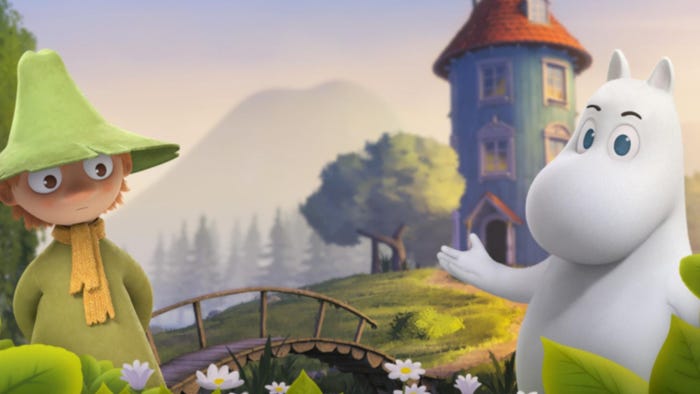What is the auteur theory, and how does it pertain to video games? Can auteur games succeed critically and commercially and if so, who is making them? I will explore this topic through the lens of a 20-year career in AAA and indie game development.


Introduction
What is the auteur theory, and how does it pertain to video games? Can auteurs exist in the collaborative environments of large corporate, and smaller-scale independent game studios? Can auteur games succeed critically and commercially? If so, who is making them, and in what ways do they look and feel unique? Reflecting on my 20-year career in video game development, I will describe the auteur theory and explore its relationship to video games.
Auteur Theory Defined
“Auteur” means “author” in French. German playwright Max Reinhardt first introduced the auteur theory in the early 1900s, and the periodical Cahiers du Cinéma popularized it during the French New Wave filmmaking movement in the 1950s. According to auteur theory, the director is the sole author of his film, which reflects a singular creative vision rather than the collective output of the filmmaking team. Auteur filmmakers exercise an unusual amount of control over their productions.
Films created by auteurs have recognizable, distinct qualities that inform the audience who the director is. Auteurs imprint a strong mark on their films in various ways, including visual design and art direction, cinematography, music, editing, and characterization. Their creative stamp can be felt across their works, throughout their careers. Audiences grow to expect something unique and special from them.
Some well-known directors commonly considered auteurs include Alfred Hitchcock, Stanley Kubrick, Quentin Tarantino, Lotte Reiniger, Spike Lee, Darren Aronofsky, and Wes Anderson. The expression of their creative visions is readily identifiable.
As a micro case study, let’s examine the works of director Stanley Kubrick, focusing on the qualities that make his films unique.
Kubrick’s style is apparent across his entire body of work - especially impressive considering the widely varying narrative themes in his films.
It is important to note that a filmmaker, or game developer (as we will discuss shortly), does not simply choose to become an auteur. It is not a self-described label; it is an earned privilege. Filmmaker Francis Ford Coppola, in 1975, said: “The auteur theory is fine, but to exercise it you have to qualify, and the only way you can qualify is by having earned the right to have control, by having turned out a series of really incredibly good films.” (Murray, 1975: 68)
Do you know who Hideo Kojima is? Have you ever heard of Clifford Blezinski? Would you be able to identify their work? These two video game studio heads have led the creation of some of the most popular games ever (Metal Gear Solid series, Gears of War series), yet I propose that most audiences would be unable to identify their creative signatures for these games in the way that Stanley Kubrick’s is in film.
Compare a screenshot from the latest Call of Duty game to those from games in the Battlefield, ARMA, and Black Ops series.

These screenshots do not communicate unique gameplay features, narrative themes, or creative ideas. In AAA games - those produced by large studios - issues of identity crisis exist within areas of visual presentation, game mechanics, and gameplay systems. These studios generally produce games that look and feel similar, devoid of the mark of a singular creative visionary. Why?
Typically, large production crews produce AAA games. Individual department heads, such as Art Director, Game Director, Design Director, and Development Director, do exist in the corporate hierarchy, but productions often lack a single overall leader with a clear creative voice and vision. Whereas Wes Anderson would have the last word on nearly all of the important creative decisions made in his films, in games, committees of business people often-times make these high-level decisions, disconnected from the actual boots-on-the-ground creative development.
AAA games are incredibly complex, time-consuming, and expensive to produce. Hundreds of elements and systems must be created, tested, and implemented across a variety of disciplines. Each of the game's interdependent sub-components requires significant time to conceptualize and execute. Department leads within each discipline work together to efficiently integrate these components on aesthetic and functional levels. Due to the complex nature of game development, leads generally lack a comprehensive understanding of each structural element of a game’s design and implementation - nor are they expected to, because their areas of expertise are narrowly specialized. For example, a game’s lead programmer would be an incompetent art director, the art director would likely fail as the game’s writer, the writer would not be qualified to direct gameplay design, and so on.
In contrast, film director Quentin Tarantino fully grasps the interconnected nature of script, storyboards, acting, direction, cinematography, and sound design in film. By having worked in each of these disciplines, Tarantino is able to effectively communicate his creative vision, and the specific means to achieve it, to each discipline of the production team. This single, holistically experienced creative leader, is atypical of most AAA game productions.
Additionally, business executives beholden to shareholders frequently make decisions influencing the creative direction of AAA games. These profit-motivated decisions can result in games that look and feel derivative - creative “safe bets” based on long-standing genre standards that lead to the production of sequels, franchises, and sometimes even straight-up rip-offs of other financially successful games. Several large game studios and publishers have recently been criticized by consumers for pay-to-win practices, loot boxes, and other forms of micro-transactions that negatively impact the gameplay experience and cheapen the creative vision of their games. Further, earnings-driven creative decisions suppress the industry’s adoption of individual leaders with strong, singular creative visions and control, because these auteurs take creative risks and push boundaries in ways that are unacceptably risky in the eyes of shareholders.
While the auteur theory seems largely absent in the world of AAA game production for the reasons noted above, there have been a few notable game designers who have, as Coppola said, “earned their right” to have auteur-like control over the course of their careers, including Hideo Kojima (Metal Gear), David Jaffe (God of War), Ken Levine (Bioshock), and David Cage (Heavy Rain). Much in the same way Stanley Kubrick was notoriously challenging to work with on set, several of these studio heads have reputations for demanding a great deal from their production teams in order to fully execute their singular creative visions.

Auteur Theory in Independent Games
Creativity is alive and well in the games industry though, and the mark of the auteur can still be found even if the developers creating these games haven’t been formally labeled as such. Over the past decade, independent game developers (“indies”) have been pushing the creative boundaries of the art form into new, exciting territories, not unlike the French New Wave filmmakers in the 1950s and 1960s.
Although some indies work with publishers, many choose to remain free of any external financial support or creative influence so they may explore their own creative ideas with minimal outside interference and pressure. Teams are typically small, have limited budgets, and accept more personal and financial risk than individuals working at large studios. Indies working on their first games typically do not have steady income, company-subsidized insurance, or any other benefits to speak of. Thus, the creative direction is often determined by the unique, personal vision of a passionate individual – not a committee (since none exist). Some of the most beautiful, fun, exciting, unique, humorous, and experimental games have come from small indie studios – games that would never have been financed and taken into full production at AAA studios. What makes these games unique and identifiable as works of a singular creative voice?

Journey (Jenova Chen, That Game Company): stylized, striking visual presentation of a sparse, lonely world; gameplay lacking combat or violence; drop-in/drop-out co-operative gameplay with an anonymous player online without the ability to communicate through voice or text.
- - - - - - - - - -

Brothers: A Tale of Two Sons (Josef Fares, Starbreeze Studios): unconventional player controls, where the user simultaneously controls each brother, independently, using each of the game controller’s analog sticks; an emotional story communicated not through dialogue or cutscenes, but through live gameplay that reinforces the developing bond of two characters.
- - - - - - - - - -

Papers, Please (Lucas Pope, 3909): drab, minimalist character and world design; gameplay and story take place completely within the confines of a border patrol booth where the player must approve or deny entry into a fictional communist country; simple, repetitive gameplay mechanics.
- - - - - - - - -

Celeste (Matt Thorson, Matt Makes Games): unique combination of retro pixel art, challenging platforming gameplay, and a touching, emotional story about overcoming mental health issues.
- - - - - - - - - -

Inside (Arnt Jensen, Playdead): stark, desaturated, noir-ish art direction; story communicated almost completely subtextually through color, lighting, music and sound design; no tutorialization or “hand-holding” to lead the player through the world and explain the settings/narrative themes.
- - - - - - - - - -
In each of these independent games, taking creative risks enabled the development of uniquely identifiable traits that audiences grew to recognize and appreciate, and the productions were led by passionate individuals with singular creative visions. While the moniker of auteur hasn’t been popularized in the realm of video games as it has in film, I would argue that these games are the works of auteurs.
It is important to note that these games have achieved critical and commercial success, proving that there is an intelligent and informed player-base eager for innovative gaming experiences. Also, as with filmmaking auteurs, the indie game creators highlighted above have earned their success and acclaim by consistently proving their talents over the course of multiple projects. In fact, many of the most successful independent game developers today honed their technical skills while working on AAA games. A common motivating factor for many of these developers to leave their studio jobs and explore independent production has been the desire to explore their own personal ideas - ideas that would likely never be supported at larger, more risk-averse studios.
Why hasn’t the auteur theory become commonplace in video games? I believe the answer is simple – a general lack of awareness of the concept. The vast majority of the video game-playing public has not attended film school and is unfamiliar with cinema history and terminology. They’ve never heard of the French New Wave movement, or the auteur theory, which was born in an earlier age, before video games existed. How can we raise awareness of and appreciation for auteurism in games?
Fortunately, over the past few years, indie games have been placed in the forefront of media and press coverage and are finally receiving the acclaim and attention they deserve. Annual industry award shows such as IGF, The Game Awards, and DICE recognize achievements in indie game development. I would encourage independent game developers to include their individual names on the main menu – the first thing that players see - so their work is recognized (a common identifier in films – the director’s name is usually displayed front and center before the story begins). As game scholars and critics, we should include the names of these developers in our scholarly writings, course lectures, and assignments.
Conclusion
While it’s flattering to receive praise from gamers, other developers, and games media, at the end of the day, most developers are grateful to be working in this fun, expressive, creative, and challenging industry. One thing has remained consistent among the development teams I’ve worked with throughout my career – the collective desire to create something we’re proud of. While I don’t think it is essential that game developers with strong, singular creative visions be labeled as auteurs, it is important that they be recognized for the bold, creative risks they are taking.
From an academic perspective, there is great value in studying the works of these independent game developers. They push the boundaries of games into new territories, and their games are valuable teaching tools in a variety of contexts. As game developers, students of game design, and game scholars, we can learn more about interactive storytelling techniques, visual and sound design, gameplay mechanics, and more by playing these games and engaging with them critically.
Works Cited
Murray, William, 1975. ‘Interview with Francis Ford Coppola’ Playboy, p. 68.
Read more about:
BlogsAbout the Author(s)
You May Also Like








